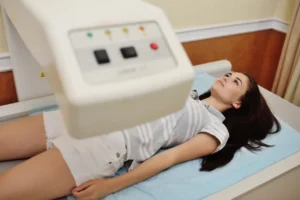Schedule Your DEXA Scan Today
DEXA Scan: The Gold Standard for Full Body Composition and Bone Density
If you’re serious about truly understanding your body beyond just the number on a scale, a DEXA scan is your best choice. Short for Dual Energy X ray Absorptiometry, a DEXA scan is widely recognized as the gold standard for measuring full body composition and bone density. It not only provides precise measurements of body fat, lean mass, and bone but also pinpoints exactly on your body where you’ve lost fat or gained muscle. Whether you’re tracking fitness goals, monitoring bone health, or simply curious about what’s really going on inside, DEXA delivers unmatched precision and clarity.
What Is a DEXA Scan?
A DEXA scan is a fast, non-invasive imaging test that uses very low levels of X-rays to measure three key components of your body:
-
Bone density, essential for identifying osteoporosis and assessing fracture risk
-
Lean muscle mass, crucial for tracking muscle health and metabolic function
-
Body fat percentage, breaking down fat distribution including visceral fat around your organs and subcutaneous fat under your skin
Unlike common methods like InBody, Hume, or Bod Pod, DEXA provides highly detailed, region-by-region analysis. These other methods rely on indirect estimations and can be influenced by hydration levels, recent food intake, or air displacement inaccuracies. DEXA scans directly measure tissue composition with superior accuracy, making it the method trusted by top hospitals and professional athletic programs around the world.
Why DEXA Is the Gold Standard
When it comes to accuracy and reliability, DEXA sets the benchmark. It is the same technology used by leading hospitals to assess osteoporosis and by elite athletes to fine-tune their training and performance. There is a reason Olympic teams, NFL franchises, and top sports scientists rely on DEXA instead of less accurate methods.
-
Clinical accuracy trusted worldwide in healthcare and sports science
-
Gold standard for bone density and body composition assessment
-
Highly detailed, reliable insights that drive real health and performance improvements
Simply put, when precision matters, DEXA is the clear choice.
What Can a DEXA Scan Tell You?
Beyond body fat percentages, a DEXA scan provides crucial data that other devices cannot match:
-
Visceral fat measurement, a key indicator of metabolic and cardiovascular risk
-
Muscle imbalances and asymmetries that can impact performance and increase injury risk
-
Bone mineral density for diagnosing or monitoring osteoporosis
-
Detailed body fat distribution across specific regions like arms, legs, and trunk
-
Lean mass changes over time, ideal for tracking training or rehabilitation progress
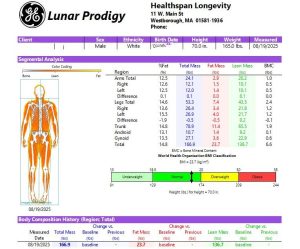
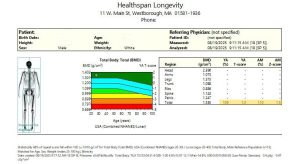
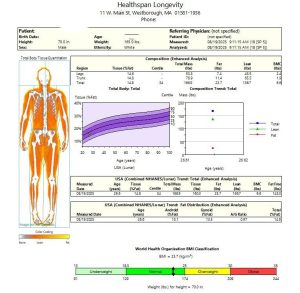
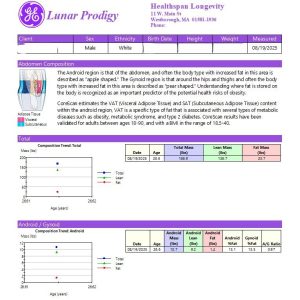
Who Should Consider a DEXA Scan?
A DEXA scan can benefit nearly anyone looking to get a complete and accurate picture of their health. It is especially valuable for:
-
Athletes and fitness enthusiasts optimizing training and recovery
-
Individuals focused on healthy aging and bone health
-
Those pursuing body recomposition or weight management goals
-
People at risk for or monitoring osteoporosis
-
Anyone seeking a science-backed assessment to inform their health journey
How a DEXA Scan Works
The scan itself is simple and comfortable. You will lie fully clothed on a padded table while a scanning arm moves slowly overhead. The entire process takes about 10 to 15 minutes. There are no enclosed spaces, no injections, and no discomfort, just a quick, precise scan with extremely low radiation exposure.
How to Prepare for Your DEXA Scan
For the most accurate results, it is important to follow a few easy preparation steps:
-
Fast for four to six hours before your scan
-
Avoid exercise, especially resistance training, for 24 hours before your appointment
-
Wear comfortable, metal-free clothing like a sports bra or gym shorts
-
Confirm that you are not pregnant before scheduling, as the scan is not performed during pregnancy
Proper preparation ensures you get the most reliable and insightful data from your DEXA scan.
Frequently Asked Questions
Is a DEXA scan safe?
Yes. DEXA scans use an extremely low level of radiation, much less than a typical X-ray or even what you are exposed to naturally in a day outdoors. It is safe for repeated use.
How often should I get a DEXA scan?
For tracking changes in body composition or bone health, many people opt for a scan every three to six months. Annual scans are common for bone density monitoring.
Will the scan tell me if I have osteoporosis?
Yes. DEXA is the gold standard for diagnosing osteoporosis, providing precise bone mineral density measurements to assess fracture risk.
Do I need a referral from a doctor?
No referral is necessary. You can schedule your DEXA scan directly with us.
Can athletes benefit from DEXA scans?
Absolutely. Professional and Olympic athletes use DEXA scans to monitor muscle mass, fat mass, and body composition changes to optimize performance and recovery. It is a standard tool in sports science and elite training programs.
How does DEXA compare to other body composition tests like InBody, Hume, or Bod Pod?
DEXA is significantly more accurate. While InBody and Hume rely on bioelectrical impedance and Bod Pod uses air displacement, both are indirect methods subject to errors from hydration, recent meals, or temperature. DEXA directly measures tissue density and composition, providing a clearer, more reliable picture.
Ready to Get Started?
If you are ready to unlock the most accurate view of your body and health, book your DEXA scan today. Get insights trusted by top hospitals and elite athletes to help you reach your goals with confidence.


